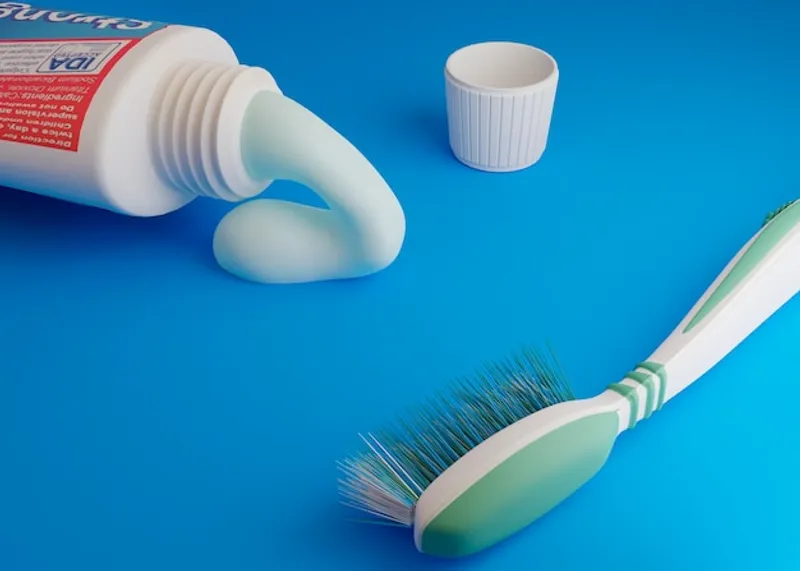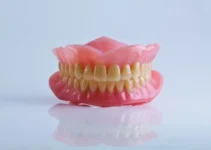Selecting the right toothbrush is crucial for maintaining optimal oral hygiene. Considering the vast array of toothbrushes available on the market, it can be overwhelming to decide which one best suits your dental health needs. Factors such as bristle softness, brush head size, and handle design should be carefully evaluated. Soft bristles are recommended by most dentists as they are gentle on the gums and robust enough to remove plaque. The size of the brush head should allow easy access to all areas of the mouth, and a comfortable handle can help ensure proper brushing technique. Understanding these elements can significantly enhance your daily dental care routine.
Understanding Different Types of Toothbrushes
When it comes to maintaining oral hygiene, the type of toothbrush you choose can make a significant difference. Understanding the different types of toothbrushes available can help you make an informed decision that suits your specific needs. There are several factors to consider, including whether the toothbrush is manual or electric, the type of bristles, and the size and shape of the brush head.
Each type of toothbrush has its advantages and disadvantages, and what works best for you may depend on your dental health needs and personal preferences. Here, we will delve into the various options available to help you make the best choice for your oral health.
Manual vs Electric Toothbrushes
Manual toothbrushes have been around for centuries and are a tried-and-true tool for maintaining oral hygiene. They are cost-effective, widely available, and come in various designs. Regular use of a manual toothbrush can effectively remove plaque and food particles from your teeth. However, the efficacy of a manual toothbrush largely depends on your brushing technique and consistency.

Electric toothbrushes, on the other hand, have gained popularity due to their ability to provide consistent brushing motions. According to studies, electric toothbrushes reduce plaque and gingivitis more effectively than manual toothbrushes. They are especially beneficial for individuals with limited manual dexterity or those who find it challenging to brush for the recommended two minutes. Though electric toothbrushes tend to be more expensive, they offer features such as timers and different brushing modes, which can enhance your brushing experience.
- Electric toothbrushes can offer superior plaque removal.
- Manual toothbrushes are more affordable and accessible.
- Electric toothbrushes are beneficial for individuals with limited dexterity.
- Effective brushing depends on correct technique whether using manual or electric brushes.
Soft Bristles vs Hard Bristles
The type of bristles on your toothbrush plays a crucial role in your oral health. Soft bristles are generally recommended by dentists as they are gentle on the gums and enamel. Using a toothbrush with soft bristles reduces the risk of damaging delicate gum tissue and wearing away the protective enamel on your teeth.
Hard bristles, although they may seem like they would clean more effectively, can actually cause harm if used too aggressively. Hard bristles can lead to gum recession and enamel abrasion, which can result in increased sensitivity and a higher risk of cavities. For this reason, most dental professionals advise against using toothbrushes with hard bristles.
- Soft bristles are gentle on gums and enamel.
- Hard bristles can cause gum recession and enamel abrasion.
- Soft bristles are generally recommended by dental professionals.
Brush Head Sizes and Shapes
The size and shape of your toothbrush head matter more than you might think. A smaller brush head can reach areas that are difficult to access, such as the back molars, making it easier to clean your entire mouth effectively. This is especially important for children or individuals with smaller mouths.
Different shapes of toothbrush heads, such as diamond-shaped or rectangular, can also impact the efficiency of your brushing. Some shapes are designed to better fit the contours of your teeth and gums, providing a more thorough clean. Choosing a toothbrush head that fits comfortably in your mouth and can navigate around your teeth and gums efficiently is essential for optimal oral hygiene.
- Smaller brush heads can reach difficult areas.
- Different shapes can improve cleaning efficiency.
- Choosing the right size and shape ensures better oral hygiene.
Understanding the different types of toothbrushes is the first step in maintaining excellent oral health. For more detailed insights on oral hygiene and dental care, explore our other articles.
Factors to Consider When Choosing a Toothbrush
Choosing the right toothbrush is essential for maintaining optimal oral health. With various types and brands available, it can be challenging to decide which toothbrush is best suited for your needs. Several factors should be taken into account when making this decision. In this article, we’ll explore key considerations, including your personal oral health needs and recommendations from dental professionals.
Understanding these factors ensures that your choice of toothbrush contributes effectively to your daily oral hygiene routine, helping to prevent dental issues such as cavities, gum disease, and plaque buildup. Let’s delve deeper into the important aspects to consider.
Personal Oral Health Needs
Your personal oral health needs play a significant role in determining the best toothbrush for you. Factors such as age, dental conditions, and the sensitivity of your teeth and gums must be considered. For instance, children typically require smaller toothbrushes with soft bristles to accommodate their smaller mouths and delicate gums. On the other hand, adults with healthy gums may benefit from medium-bristle brushes.
Individuals with specific dental issues, such as gum disease or sensitive teeth, may require specialized toothbrushes. Electric toothbrushes with pressure sensors can be particularly beneficial for those who tend to brush too hard, as they help prevent further damage to the gums and enamel. Additionally, toothbrushes with angled bristles can reach difficult areas, making them ideal for people with braces or other orthodontic appliances.
Consider the following when assessing your personal oral health needs:
- Age and dental development
- Presence of dental appliances
- Existing dental conditions (e.g., gum disease, sensitivity)
- Manual dexterity or physical limitations
Recommendations from Dental Professionals
Dentists and dental hygienists are valuable resources when choosing the right toothbrush. Regular dental check-ups provide opportunities to receive personalized recommendations based on your unique oral health status. Dental professionals can suggest specific toothbrush types and brands that align with your individual needs, ensuring more effective plaque removal and overall better oral health. One widely endorsed recommendation is the use of electric toothbrushes. Numerous studies have shown that electric toothbrushes are more effective at reducing plaque and gingivitis compared to manual toothbrushes. For instance, a study published in the American Journal of Dentistry suggests that electric toothbrushes with oscillating-rotating technology can reduce plaque by up to 21% more than manual brushes within three months.
Dental professionals may also recommend certain toothbrush features, such as:
- Soft bristles to prevent enamel wear and gum damage
- Small brush heads to reach all areas of the mouth, especially for children and those with a smaller jaw
- Handles with a good grip to ensure effective control during brushing
In conclusion, choosing the right toothbrush is a crucial step towards maintaining excellent oral health. By considering personal oral health needs and seeking recommendations from dental professionals, you can select a toothbrush that enhances your daily dental care routine. For more information on comprehensive oral care and professional dental advice, delve into our other insightful articles.
Maintaining Your Toothbrush for Optimal Oral Health
Your toothbrush is an essential tool in maintaining your oral health. Ensuring its proper care not only extends its lifespan but also enhances its effectiveness. A well-maintained toothbrush can significantly reduce the risk of oral infections and ensure that your dental hygiene routine is more efficient. Proper care involves more than just rinsing it with water after each use. Factors such as storage, replacement frequency, and cleaning methods play crucial roles. Understanding these aspects can help you maintain a healthier mouth and avoid common dental issues such as cavities and gum disease.
In this section, we will delve into the details of proper toothbrush storage, knowing when to replace your toothbrush, and effective cleaning methods. These practices are based on guidelines from leading dental health organizations and scientific research.
Proper Toothbrush Storage
To maintain the hygiene of your toothbrush, proper storage is crucial. Avoid keeping your toothbrush in a closed container, as this can create a moist environment where bacteria thrive. Instead, store it in an upright position and allow it to air-dry. This method helps reduce the risk of bacterial and fungal growth.
It is also important to keep your toothbrush away from other toothbrushes to prevent cross-contamination. Consider using a toothbrush holder with separate slots if multiple people share the same bathroom. Additionally, ensure the holder itself is cleaned regularly to avoid the buildup of bacteria and debris.
Another essential tip is to place your toothbrush at least two meters away from the toilet. Flushing can release bacteria-laden droplets into the air, which may settle on nearby surfaces, including your toothbrush. Keeping your toothbrush at a safe distance from the toilet minimizes this risk.
When to Replace Your Toothbrush
Knowing when to replace your toothbrush is vital for maintaining oral health. The American Dental Association recommends replacing your toothbrush every three to four months. This guideline is based on the average wear and tear of bristles, which can become less effective over time in removing plaque and debris.
However, there are situations where you may need to replace your toothbrush sooner. For instance, after recovering from a cold, flu, or any oral infection, it’s advisable to get a new toothbrush to avoid reintroducing bacteria into your system. Additionally, if you notice the bristles are frayed or damaged, it’s time for a replacement, regardless of how long you’ve been using it.
Regularly inspect your toothbrush for signs of wear. If the bristles are splayed or no longer stand upright, they won’t clean as effectively. Maintaining fresh, intact bristles ensures that your toothbrush is functioning at its best.
Cleaning Your Toothbrush
While it might seem redundant to clean something that you use to clean your teeth, it’s essential to keep your toothbrush itself free from harmful pathogens. Rinsing it thoroughly with tap water after each use is the first step. This helps to remove any remaining toothpaste and debris.
For a deeper clean, you can occasionally soak your toothbrush in an antibacterial mouthwash for about 15 minutes. However, avoid using this method too frequently, as the chemicals in the mouthwash can degrade the bristles over time.
Some studies suggest that soaking your toothbrush in a solution of hydrogen peroxide and water can also be effective. Make a mixture of equal parts and let your toothbrush sit in it for a few minutes. Be sure to rinse it thoroughly with water afterward to remove any residual solution.
Finally, remember not to share your toothbrush with anyone else. Doing so can transfer bacteria and viruses, increasing the risk of infections. Personal hygiene is paramount in maintaining a healthy mouth.
By following these guidelines, you can ensure that your toothbrush remains effective in promoting good oral health. For more insightful tips on dental care, explore our other articles.
Factors to Consider When Selecting a Toothbrush
Choosing the right toothbrush is key to maintaining dental health. Here’s a commonly asked question that can help you make an informed decision.
What should I look for in a toothbrush?
When selecting a toothbrush, consider the bristle softness, head size, and handle design. Soft bristles are recommended because they are gentle on the gums and tooth enamel yet effective at removing plaque. A smaller head size can reach tough spots, especially for those with smaller mouths. Ergonomically designed handles with a comfortable grip can enhance brushing technique and overall experience.

My name is Salman Kapa, a 73-year-old expert in bone regeneration and dental implantology. With decades of experience in the field, I am dedicated to advancing our understanding of oral health and hygiene. Through my research and writing, I aim to contribute to the development of innovative solutions in dental care.




